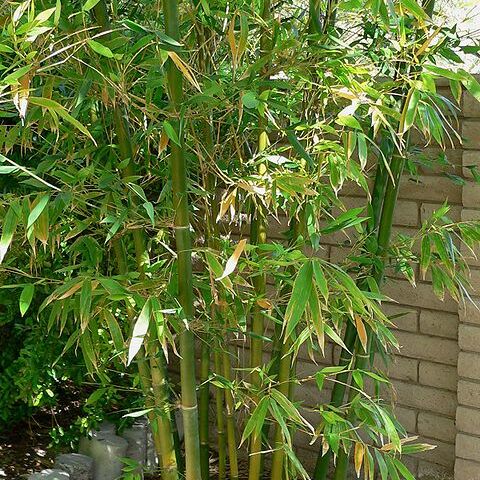Large, clump-forming. Culm usually 10-13 m (often taller in cultivation) × 4-8 cm diam., not narrowing for many metres, dark green. Culm-sheath very large, ephemeral dark appressed hairs on the larger shoots only; ligule very short; auricles very small or 0; sheath-blade to c. 13 × 10 cm, broadly triangular. Branches several from each node, usually ≤ 1 m long (plant appearing fastigiate), 1 branch much stouter than others. Leaf-sheath glabrous. Oral bristles prominent. Auricles small. Ligule small. Leaf-blade 8-18 × 1.5-3 cm, ± oblong-lanceolate, glabrous, abaxially green, adaxially darker and ± shining green. Inflorescence culms to c. 1 m, from periphery of clump. Spikelets sessile, in small clusters, 3-4 cm, laterally flattened with glumes appearing plaited, shining purple or greenish purple.
A bamboo. It grows 18 m high. The culms are straight and upright. They grow in open clumps. The clumps can be 6-12 m across. The culms are 6-15 cm across. They are bright green with a white bloom. They turn yellow with age. The shoots are edible.

